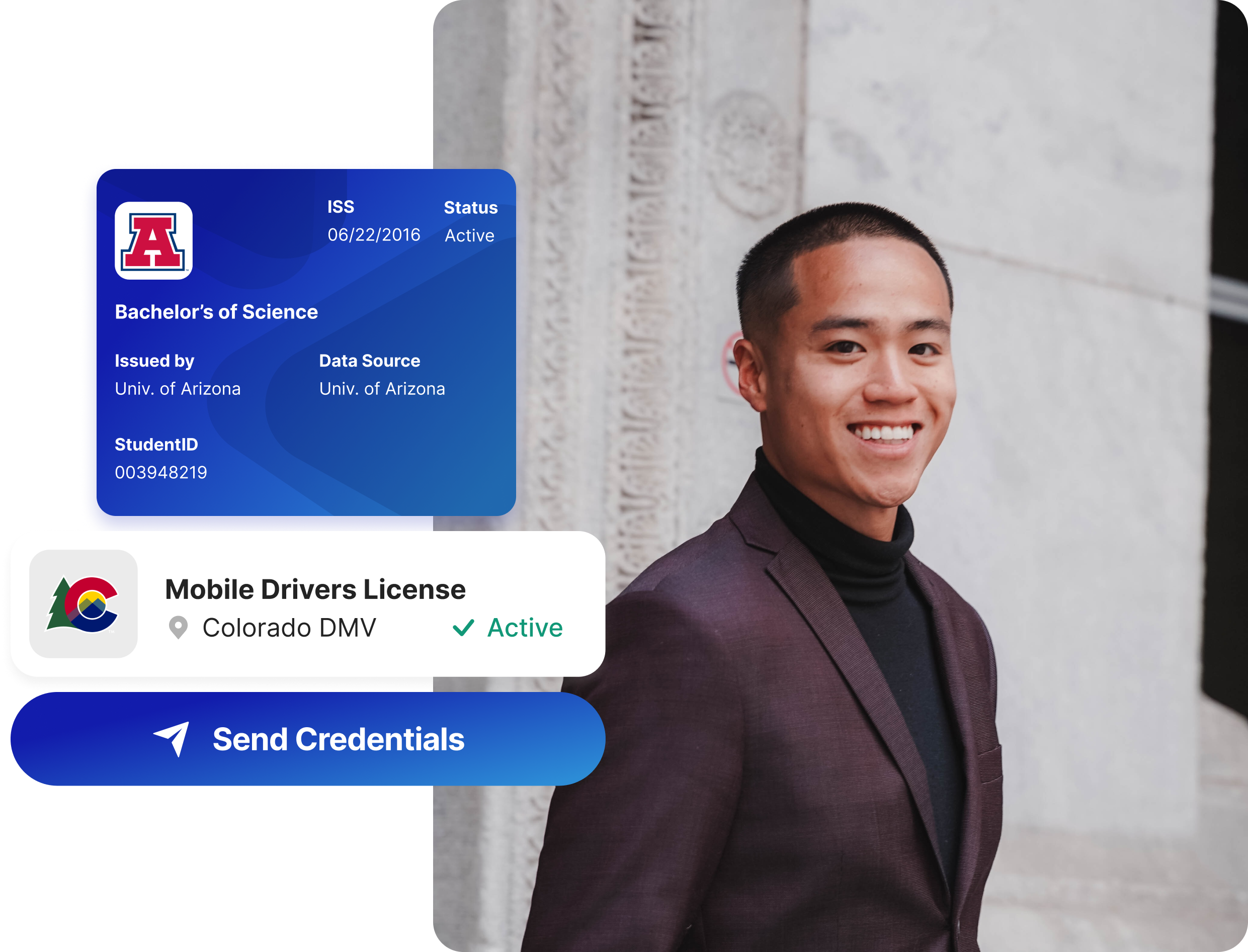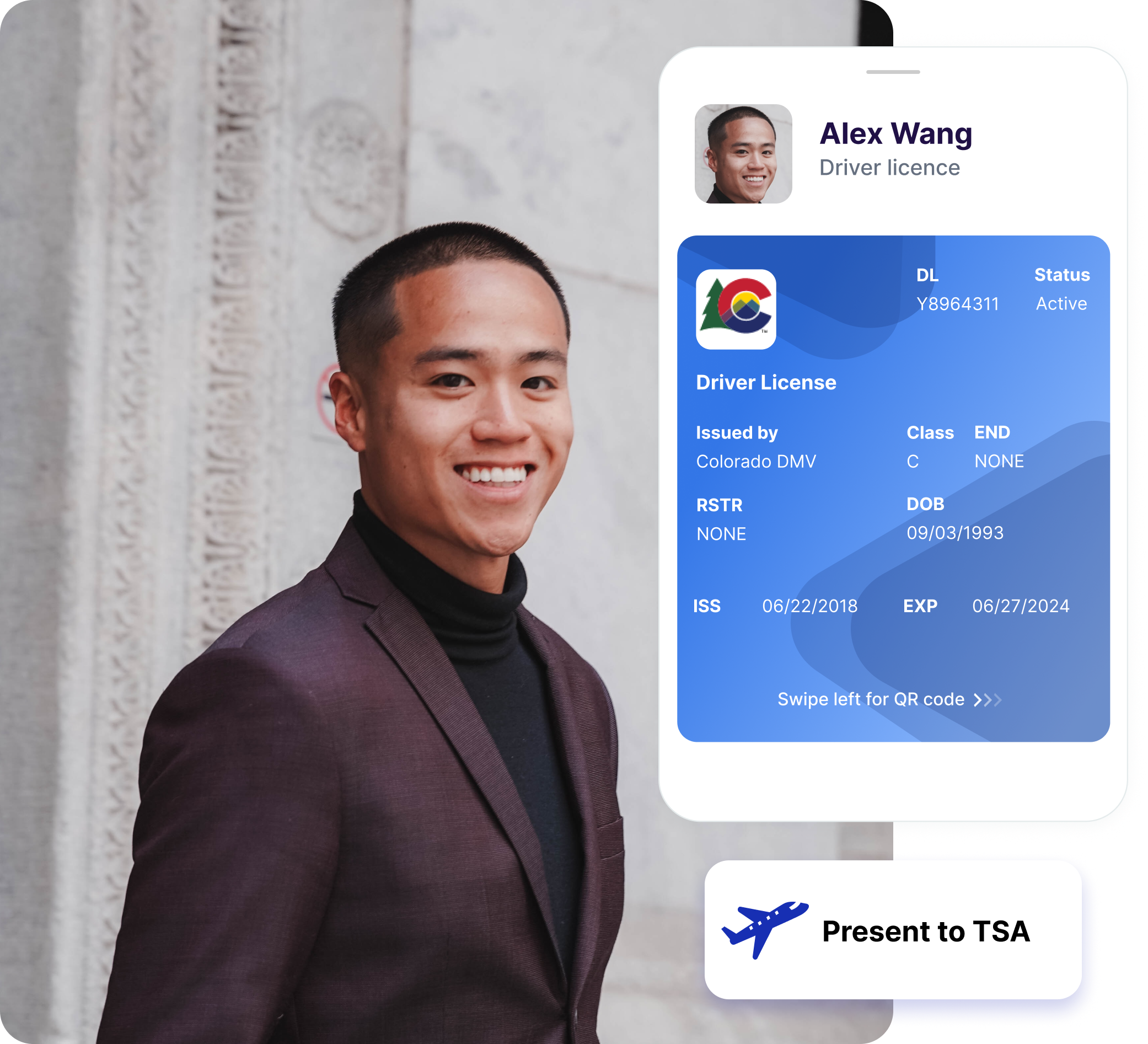Key Takeaways
For digital identity to work at scale, credentials from multiple issuers must interoperate across industries, jurisdictions, and technologies. A diploma, driver’s license, or insurance card should be verifiable side-by-side without added friction. Open standards ensure consistency while reducing reliance on siloed systems and strengthening privacy-preserving identity.
Why Interoperability Matters
In today’s environment, credentials are often locked within separate silos. Universities issue diplomas for employment, while DMVs issue mobile driver’s licenses for travel or identification. Each system solves its own requirements well, but without shared technical frameworks, verifying credentials together becomes inefficient.
True interoperability allows people to combine different credentials and present only what is necessary in each context. For example, Alex, a recent college graduate, should be able to prove residency and degree attainment when applying for a job without revealing sensitive details such as his full legal name or the exact university he attended.
This capability is not simply a convenience. It prevents bias in hiring, reduces administrative burden, and supports secure customer authentication by ensuring only essential data is shared.

Everyday Scenarios
Alex’s case illustrates the need for interoperability across different verifiers:
- At a bar, he can prove he is over 21 without disclosing his home address.
- During a job application, he can prove he holds a degree without revealing unnecessary personal identifiers.
- At the airport, his mobile driver’s license allows verification at TSA checkpoints.
- If pulled over, law enforcement in another state can confirm he is a licensed driver.
- As a small business owner, Alex can present his mobile ID to register with the Secretary of State or open a bank account.
Each of these use cases demonstrates how digital identity systems must work seamlessly across borders, agencies, and private-sector institutions. Without interoperability, users and verifiers face inefficiency, duplication, and higher risks of online fraud.

The Role of Standards and Government Agencies
The Department of Homeland Security’s (DHS) Science and Technology (S&T) Biometric and Identity Technology Center (BI-TC), in collaboration with the National Institute of Standards and Technology (NIST) and the Transportation Security Administration (TSA), is working with states and standards bodies to define interoperable frameworks. ISO/IEC 18013-5, which defines mobile driver’s license (mDL) standards, is an early example of how standardization supports adoption.
Shared technical formats are essential to ensuring that credentials can be trusted regardless of issuer or wallet application. When these standards are applied consistently, verifiers across industries can quickly confirm authenticity while preserving privacy.
Open Source as a Foundation
Even when standards exist, variations in implementation can create friction. Two solutions may both follow a specification but remain incompatible if built differently. Open-source libraries address this challenge by providing consistent codebases that implementers can adopt.
SpruceID and others in the ecosystem advocate for more open-source frameworks to ensure that interoperability is not left to chance. These resources help implementers such as governments, enterprises, and developers avoid fragmentation while reinforcing trustworthy and transparent solutions.
Reducing Fraud and Compliance Costs
Without interoperability, businesses are forced to store large volumes of user data in centralized silos, creating attractive targets for attackers. Interoperable credentials reduce this risk by allowing verifiers to check data instantly without holding unnecessary personal information.
This shift not only lowers fraud risks but also supports compliance with global regulations. Organizations can reduce dependency on costly manual processes while avoiding penalties tied to data breaches. Interoperable credentials provide a pathway to safer, more efficient digital transactions.
Moving Forward
The future of digital identity will rely on interoperable ecosystems where credentials of all types can be seamlessly shared and trusted. Achieving this requires collaboration between standards bodies, governments, and the private sector. It also requires continued investment in open-source tools that prioritize security, privacy, and accessibility.
Interoperability is the foundation of a global identity system that works across borders and industries. By ensuring that verifiable digital credentials are portable, consistent, and privacy-preserving, we can create a digital identity infrastructure that supports both individual empowerment and societal trust.

